Categories
- New In
- Best Sellers
- Childrens
- Modern Brights
- Animals
- Abstract
- Curated Classics
- Figurative
- Say It Loud
- Botanical
Collections
Browse Curated Classics
A handpicked selection of timeless art prints. This collection features renowned iconic pieces, but also overlooked masterpieces. The range of styles, eras and artists means that there is something for all art lovers. Atmosphere for your space, ready to order.
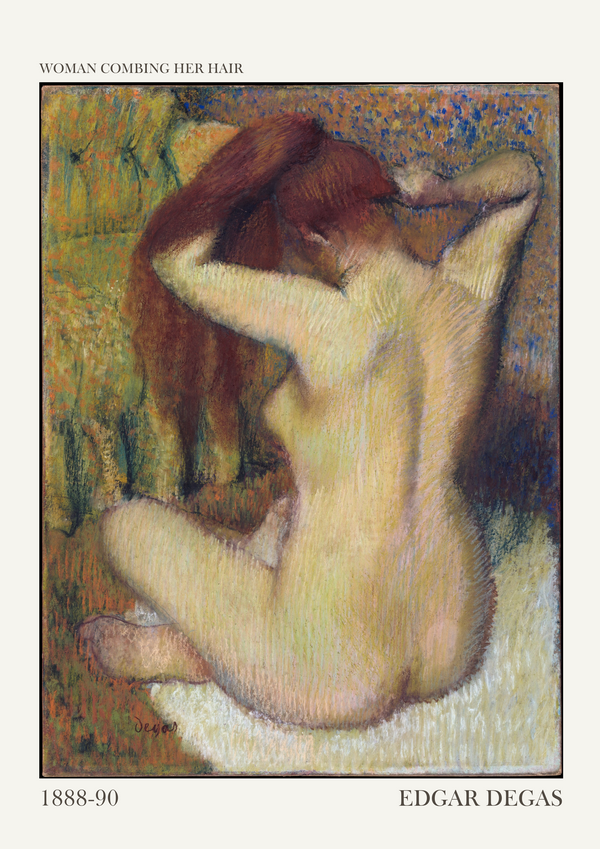
Woman Combing her Hair - Edgar Degas
Woman Combing Her Hair by Edgar Degas is a captivating depiction of an intimate, everyday moment rendered with the artist's characteristic sensitivity to movement and form. The pastel artwork showcases a woman bent slightly forward as she combs her hair, her figure framed by dynamic, sweeping lines that convey a sense of natural grace. Degas's use of soft, blended pastels creates a delicate interplay of light and shadow, highlighting the textures of the woman's hair and the subtle curves of her body. The composition feels unposed and spontaneous, emphasizing Degas’s fascination with capturing fleeting, unguarded moments of modern life. This work reflects his deep interest in the private, unseen world, celebrating the beauty of routine and personal ritual.
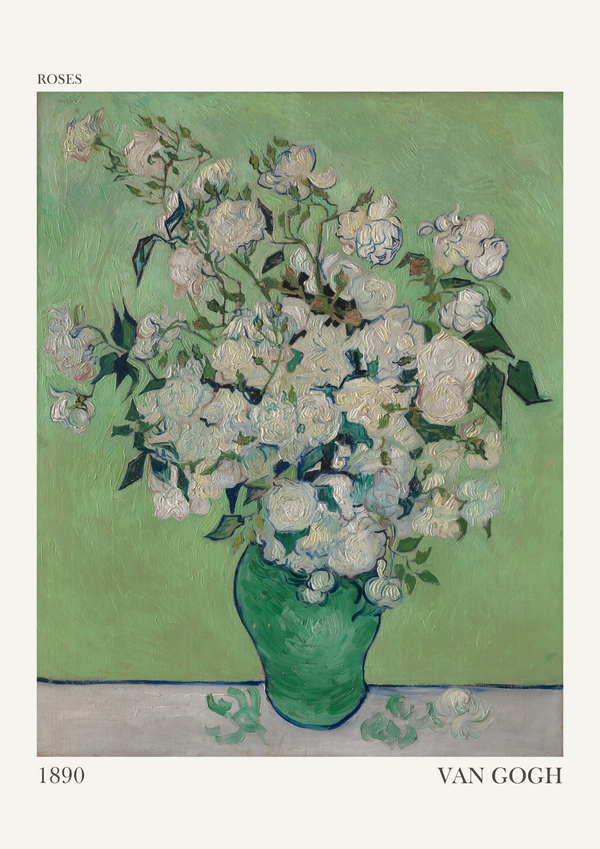
Roses - Vincent Van Gogh
This painting is a beautiful still-life work that captures Van Gogh's fascination with nature and his distinctive use of colour and brushwork. Painted in May 1890 during Van Gogh’s stay at the asylum in Saint-Rémy-de-Provence, "Roses" was one of the final pieces he created before moving to Auvers-sur-Oise. The painting is notable for its vivid, life-affirming qualities, symbolizing hope and renewal. The composition consists of a lush bouquet of white roses arranged in a green vase. The flowers are rendered with loose, expressive brushstrokes. Initially these roses were believed to have been more vibrant in colour, possibly with hints of pink or pale tones that have faded over time, now appearing as creamy whites and soft greens. The background, in muted green tones, compliments the flowers.

Le Bonheur de Vivre - Henri Matisse
Henri Matisse's "Le Bonheur de Vivre" (1905–1906) is a vibrant celebration of joy and harmony, often regarded as one of the defining works of Fauvism. The painting depicts a pastoral scene where nude figures engage in leisurely activities—dancing, reclining, and embracing—within a dreamlike, radiant landscape. Matisse uses bold, non-naturalistic colours like vivid oranges, greens, and pinks to evoke emotion and emphasize the idyllic mood. The flowing, curvilinear forms of the figures and landscape merge seamlessly, creating a sense of unity and rhythm. This ground-breaking work captures Matisse’s vision of an Arcadian paradise, blending sensuality, movement, and the transformative power of colour.
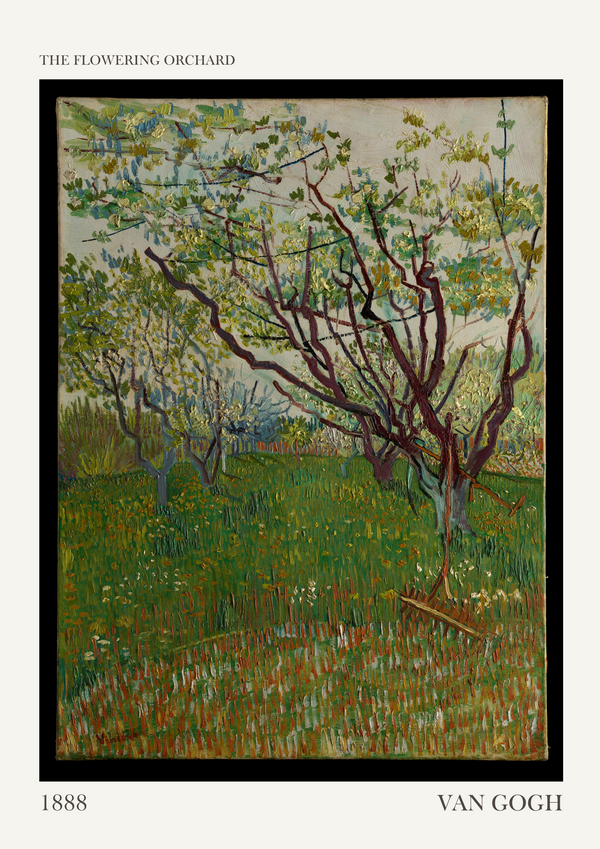
Flowering Orchard - Vincent Van Gogh
This artwork, The Flowering Orchard by Vincent van Gogh, depicts a serene orchard in full bloom, capturing the vibrant energy of spring. Painted in 1888, it features twisted, dark branches adorned with delicate white blossoms, set against a backdrop of lush green grass speckled with colourful wildflowers. Van Gogh's dynamic brushstrokes give the scene a sense of movement and texture, while the soft pastel sky contrasts with the earthy tones of the orchard. The composition radiates vitality and tranquillity, showcasing Van Gogh's deep admiration for nature and his ability to transform ordinary landscapes into vivid, emotional experiences.
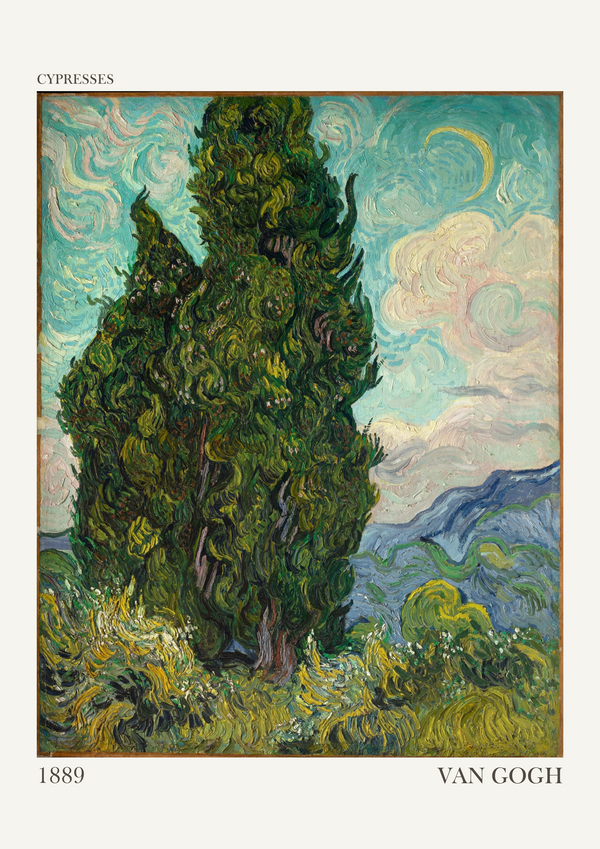
Cypresses - Vincent Van Gogh
Cypresses by Vincent van Gogh is a striking landscape painting that embodies the artist’s emotional connection to nature. Dominated by towering cypress trees that twist upward with an almost flame-like motion, the composition conveys both vitality and melancholy. The swirling sky, painted with bold strokes of blue, white, and yellow, creates a dynamic contrast to the rich green and dark tones of the trees. Van Gogh’s signature impasto technique adds texture and movement, giving the scene an almost dreamlike intensity. The painting captures the artist’s fascination with cypresses as symbols of eternity and spirituality, reflecting his deeply personal exploration of the natural world and its profound emotional resonance.
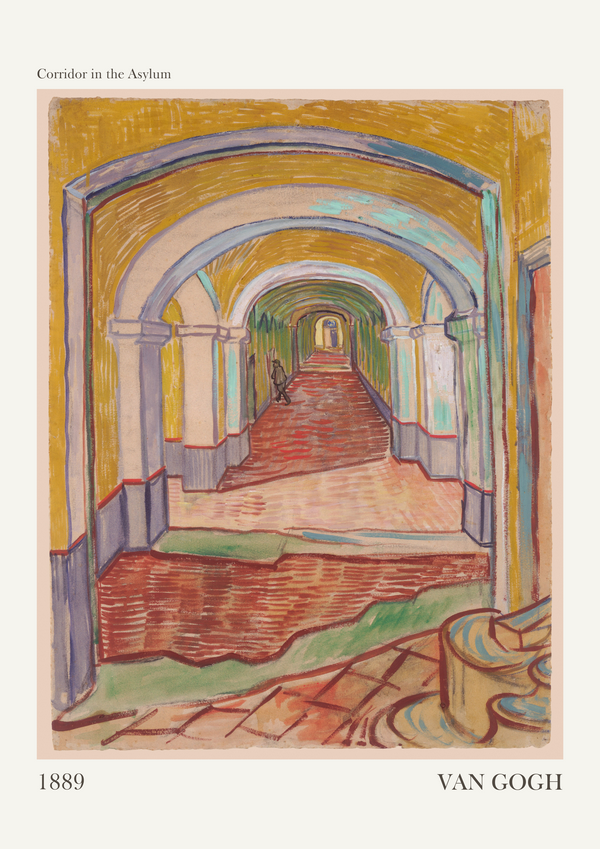
Corridor in the Asylum - Vincent Van Gogh
Corridor in the Asylum by Vincent van Gogh is a haunting portrayal of the hallway within the Saint-Paul-de-Mausole asylum, where he stayed during his struggles with mental health. The painting uses a muted palette of greys, browns, and ochres, with Van Gogh's signature swirling brushstrokes adding a sense of movement and unease to the rigid, arched structure. The repetitive arches create a feeling of endlessness, evoking the isolation and monotony of asylum life. Through its textured surface and atmospheric depth, the artwork becomes more than a simple architectural study, offering a window into Van Gogh's inner turmoil and profound emotional experience during this time.
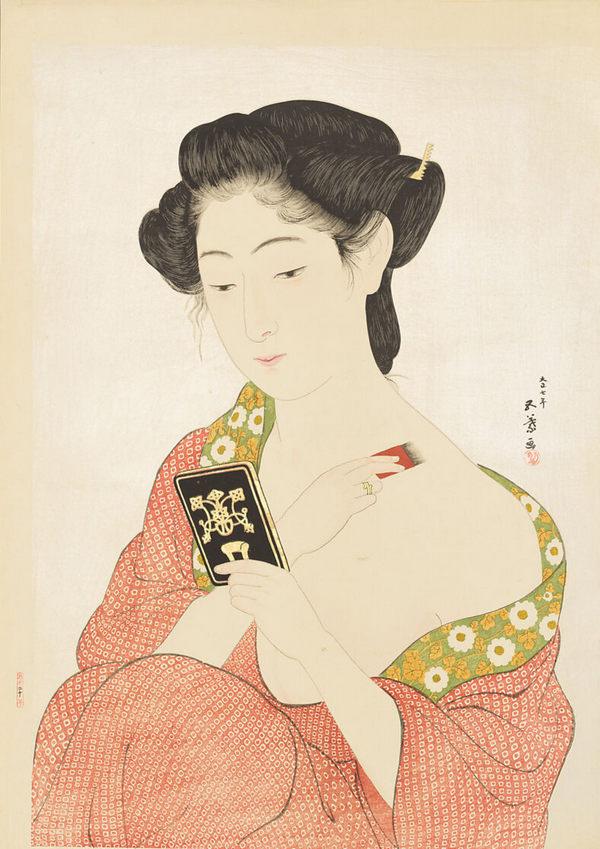
Woman Applying Makeup - Hashiguchi Goyō
Created in 1918 using a woodblock printing technique, Woman Applying Makeup is the first of only seven beauty prints published during Goyō’s lifetime. The subject is a Geisha captured in an intimate moment and the appreciation for detail and skill builds as this piece is viewed.
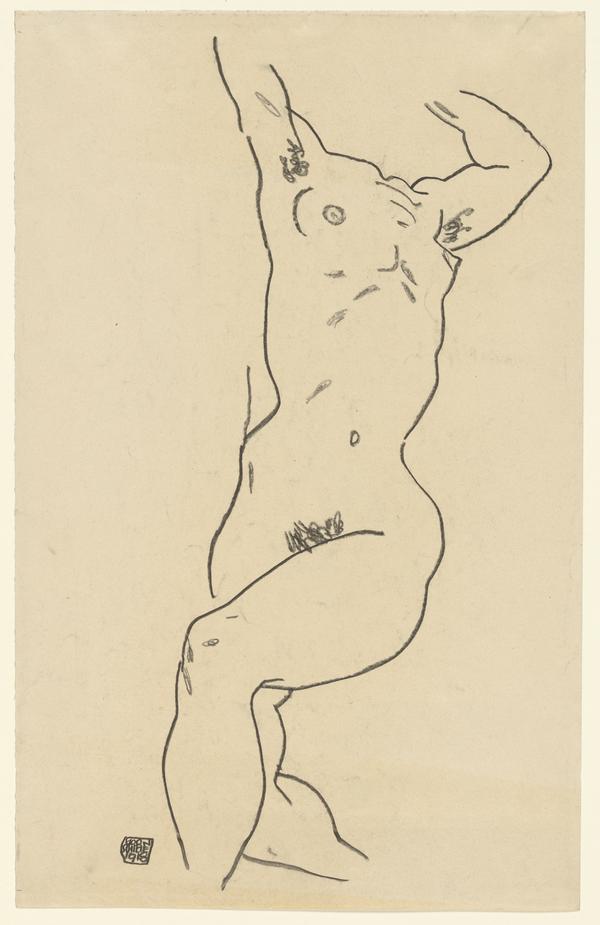
Torso of a nude
Egon Schiele’s 1918 torso study captures the raw and unadorned essence of the human form. The figure is depicted in a dynamic pose with one arm extended upwards, suggesting movement or expression. The absence of facial features highlights the universal themes of form, structure, and vulnerability that Schiele often addressed in his work.
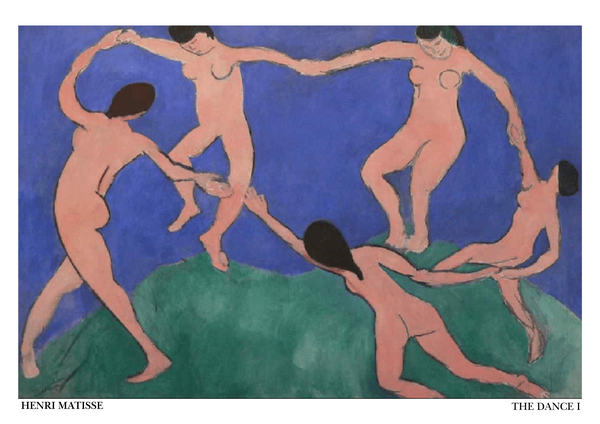
The Dance I - Henri Matisse
Dance I, by Henri Matisse, painted in 1909, is a vibrant and expressive depiction of five nude figures holding hands in a circular dance. The composition is dominated by bold, flat colours: a reddish-pink for the dancers, a deep green for the ground, and a striking blue for the sky. The simplified forms and dynamic poses emphasize movement and rhythm, creating a sense of primal joy and unity. As a preliminary study for the later Dance (II), this work features rougher brushstrokes and less refined details, highlighting Matisse’s exploration of Fauvist principles—vivid colour, emotional expression, and the harmony between figure and environment. It remains one of Matisse's most iconic works.
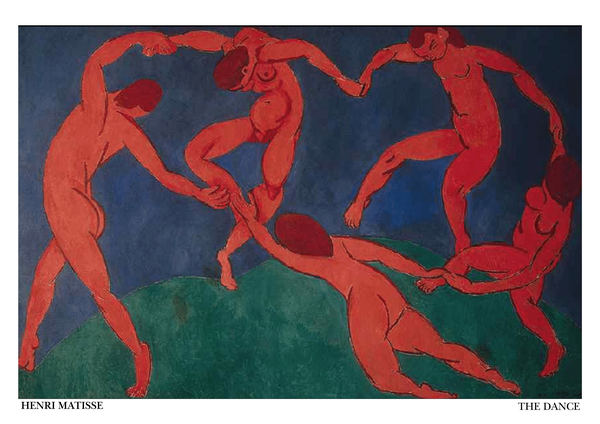
The Dance - Henri Matisse
Henri Matisse’s "The Dance" (1910) is a masterpiece of Fauvism, celebrating movement, vitality, and human connection. The painting features five nude figures holding hands and dancing in a circular motion, set against a simple yet striking backdrop of deep blue sky and vibrant green ground. The bold, flat colours and flowing, exaggerated forms emphasize rhythm and unity, while the energetic composition conveys a primal sense of joy and freedom. Commissioned by Russian collector Sergei Shchukin, Dance reflects Matisse's fascination with the interplay of colour, form, and emotion, embodying a timeless celebration of life and harmony.
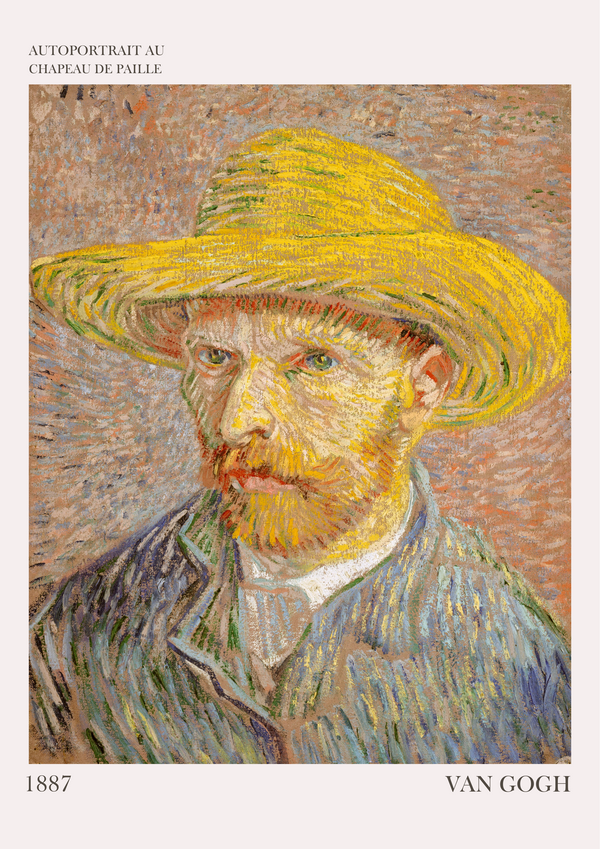
Self Portrait with Straw Hat - Vincent Van Gogh
This is Vincent van Gogh's Self-Portrait with Straw Hat (1887), an iconic example of the artist's vivid and expressive post-impressionist style. The painting features Van Gogh wearing a bright yellow straw hat, his intense blue-green gaze directed outward, engaging the viewer. The textured brushstrokes, rich with colour and energy, create a dynamic interplay of light and shadow across his face and clothing. The background, filled with soft, radiating strokes of muted colours, enhances the warmth and vibrancy of the portrait, reflecting Van Gogh's evolving artistic technique during his Paris years.

Paul Gauguin - La Orana Maria
La Orana Maria (Hail Mary) by Paul Gauguin is an oil painting created in 1891 during Gauguin's first visit to Tahiti. The artwork blends Christian iconography with Polynesian culture, illustrating Gauguin’s fascination with the island’s people and their way of life.In this painting, Gauguin portrays the Virgin Mary and the Christ Child with distinctly Polynesian features, dressed in traditional Tahitian attire. Mary is shown with a blue and red wrap around her, while holding the infant Jesus. The figures are surrounded by two women in traditional pareo garments, who are depicted with hands in prayer, paying homage to the sacred scene.The backdrop features a lush, tropical landscape, rich with vibrant green foliage, bright flowers, and the warm colours characteristic of Tahitian nature. This combination of sacred imagery and local culture showcases Gauguin’s attempt to merge Western religious themes with the exotic mysticism he found in Tahiti, creating an intriguing synthesis of spiritual and earthly elements. The painting exemplifies Gauguin’s Post-Impressionist style, using bold colours, simplified forms, and symbolic elements to evoke emotion and spiritual resonance.
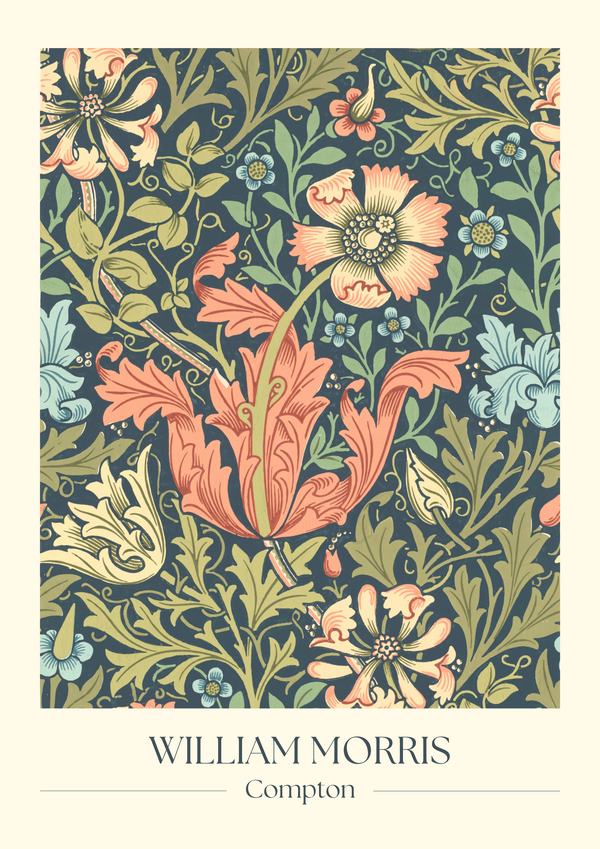
Compton's Floral Elegance by William Morris
William Morris’s 'Compton' print showcases his signature style of intricate patterns and organic shapes. The flowers and leaves are rendered in shades of orange, pink, blue, and green on a backdrop of deep brown and teal hues, creating a harmonious balance between nature and artifice.
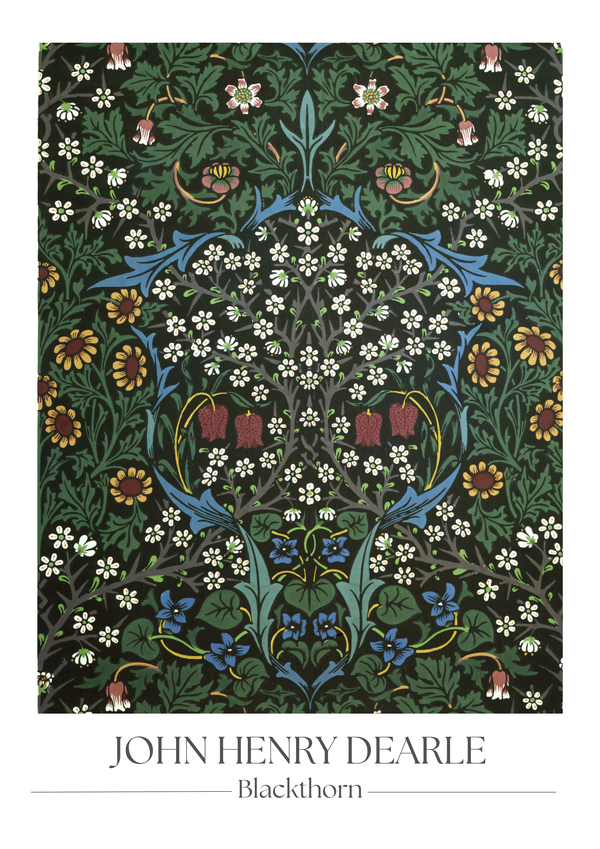
Blackthorn Tapestry - John Henry Dearle
The Blackthorn tapestry is a beautiful example of the intricate and vibrant style of design that was popular in Victorian England. This piece, created by John Henry Dearle, showcases his talent for designing complex patterns. John Henry Dearle was a prominent designer working at Morris & Co. in London, Dearle created numerous iconic designs developing a distinctive style within the Morris tradition.
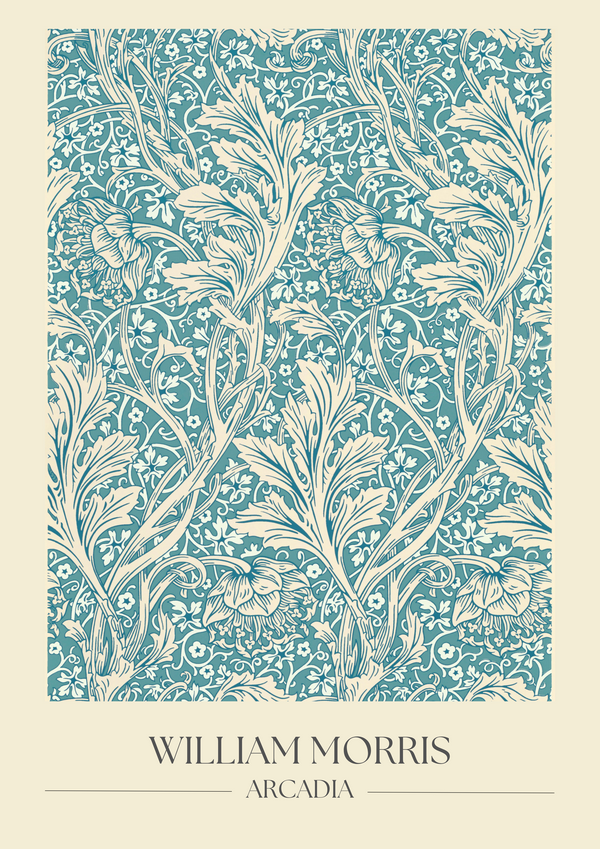
Arcadia - William Morris
William Morris’s “Arcadia” is a masterful textile design that embodies his vision of an idealized natural world. Featuring a harmonious interplay of intertwining vines, delicate flowers, and lush foliage, the pattern evokes the classical concept of "Arcadia" as a serene, pastoral paradise.

William Morris - Bachelor Button Wall Art
William Morris's "Bachelor's Button" is a classic textile design that reflects his deep connection to nature and mastery of intricate patterns. Created in 1892, this design features delicate floral motifs, primarily inspired by the bachelor’s button flower (commonly known as cornflower), entwined with winding stems and stylized leaves. The composition is symmetrical and rhythmically flowing, showcasing Morris’s signature approach to organic design.

The Coronation of Inês de Castro - Pedro-Charles Comte 1823
The haunting tale of the coronation of a dead Queen, told alongside the painting. Writing reads: Inês de Castro was born into a noble Spanish family and came to Portugal as a lady-in-waiting to Princess Constanza Manuel, who was married to Don Pedro, the heir to the Portuguese throne. Despite her initial role, Inês quickly caught the eye of Don Pedro, who fell deeply in love with her, leading to a secret romance. Although their relationship faced many obstacles, including the opposition of Don Pedro's father, King Afonso IV, the bond between Pedro and Inês grew stronger over time. After Constanza’s death, the couple secretly married and had four children, but their happiness was short-lived. Afonso, still disapproving of the union, had her brutally murdered. When Pedro became king, legend claims he sought revenge, exhuming Inês’ body and declaring her his lawful queen in a dark and symbolic ceremony in 1361.
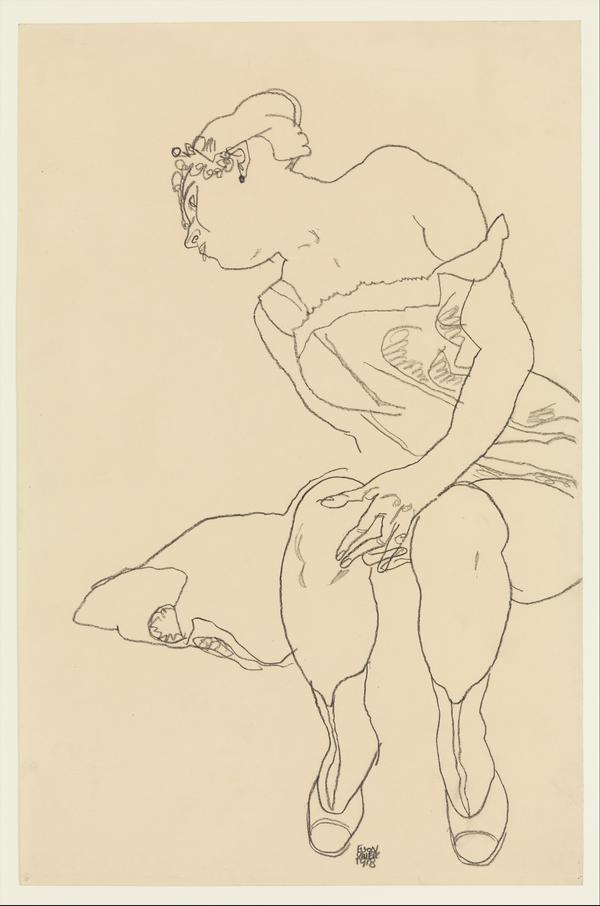
Seated Woman in Corset and Boots - Egon Shiele
Drawn in 1918 this piece is black crayon on paper and shows a woman seated but tilting herself at an angle wearing a corset and boots. The work is an exceptional demonstration of Shiele's ability to create depth, complex form and striking art from simple lines.
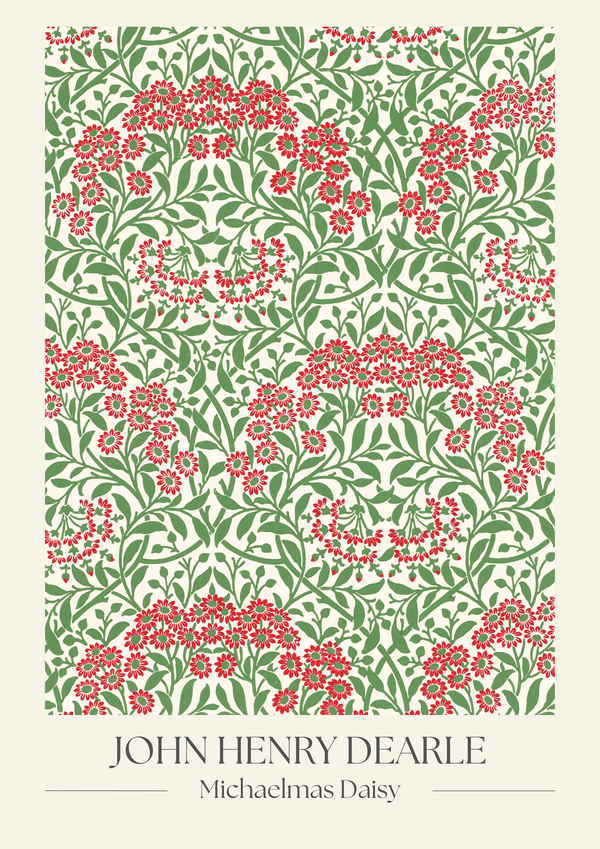
Michaelmas Daisy - John Henry Dearle
A harmonious repeated pattern featuring delicate red flowers with green foliage against a pale background. John Henry Dearle was a prominent designer working at Morris & Co. in London, Dearle created numerous iconic designs developing a distinctive style within the Morris tradition.
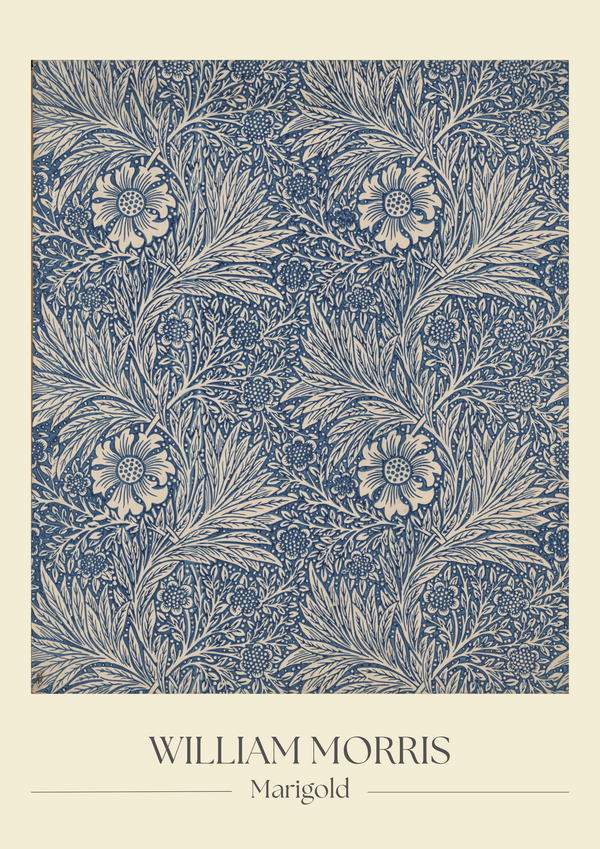
Marigold - William Morris
The Marigold design by William Morris is a highly intricate and organic pattern that showcases his signature style inspired by nature. The design features a dense and rhythmic arrangement of marigold flowers, curling leaves, and stems, creating a rich, flowing composition. The marigold flowers are stylized, with rounded petals and prominent centres, interspersed with graceful foliage that fills the space in a balanced and harmonious way. Striking navy against a neutral earthy beige.
